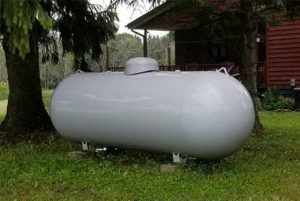Correct Placement of Propane Tank

The correct placement of a propane tank depends on several factors such as the size of the tank, local codes and regulations, and safety considerations.
Here are some general guidelines to follow:
Level, Stable Surface: The propane tank should be placed on a level, stable surface that can support its weight. The surface should be made of non-combustible material, such as concrete or gravel, and should be free of any flammable materials, such as dry grass or leaves.
Distance from Ignition Sources: Propane tanks should be placed at least 10 feet away from any ignition sources, including buildings, structures, property lines, and other flammable objects. If the tank is located near a building or structure, it should be placed on the side of the building or structure that is farthest from any potential sources of ignition.
Accessibility: The tank should be located in an area that is easily accessible for delivery and maintenance. This includes having enough space around the tank for delivery trucks to maneuver, and ensuring that there are no obstacles that could prevent technicians from accessing the tank for routine maintenance or repairs.
Protection from Damage: The tank should be protected from damage caused by vehicles or other equipment. This can include installing barriers or bollards around the tank to prevent accidental collisions, or placing the tank in an area that is not frequented by vehicles or heavy machinery.
Proper Securing: Propane tanks should be properly secured to prevent them from tipping over or being moved by strong winds. This can be accomplished by using approved mounting brackets or straps, or by securing the tank to a concrete pad or other solid surface.
It’s important to note that the specific regulations and requirements for propane tank placement can vary depending on your location, and you should always consult with a licensed propane supplier or local authorities to ensure that you are complying with all applicable rules and regulations. Additionally, it’s important to have your propane tank installed and maintained by a qualified professional to ensure that it is functioning safely and efficiently.




Leave a Reply
Want to join the discussion?Feel free to contribute!